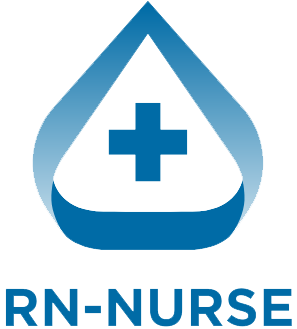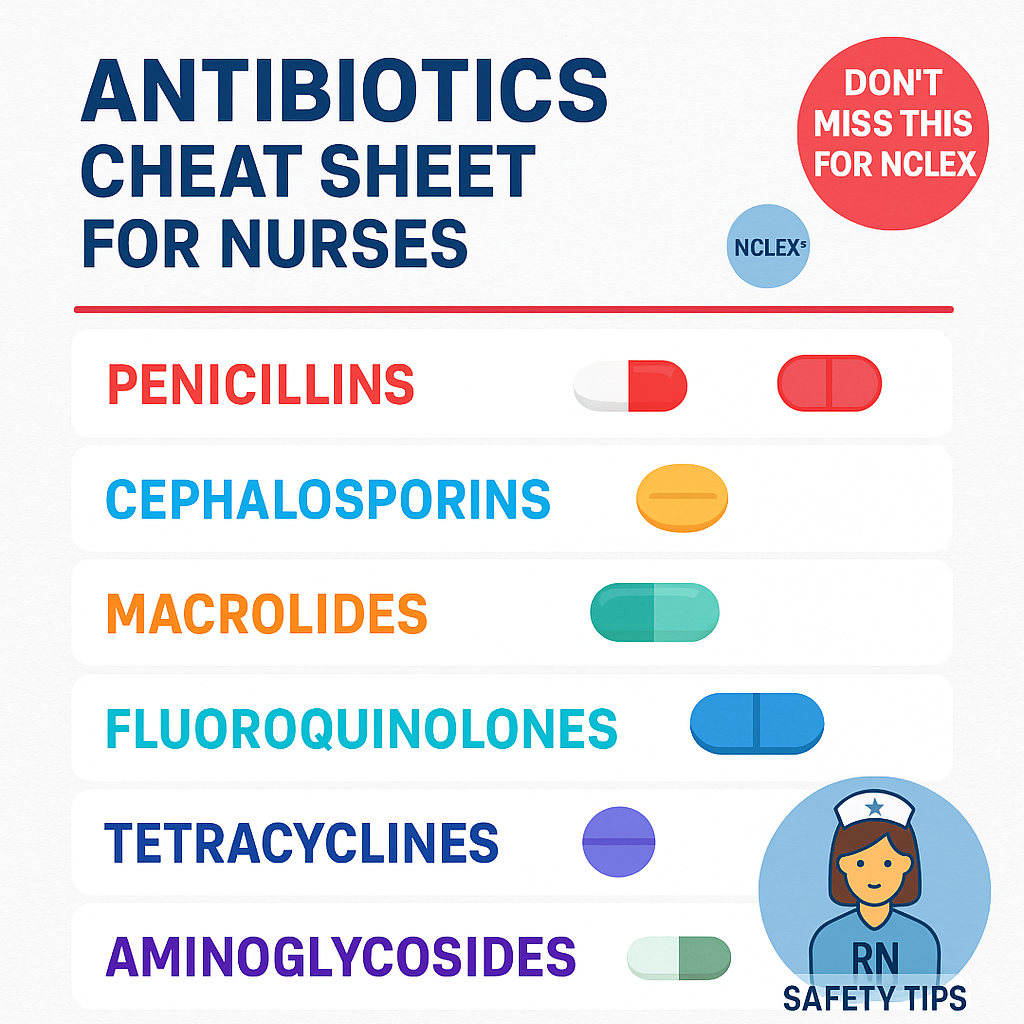When it comes to NCLEX prep and daily nursing practice, understanding antibiotics is crucial. As a registered nurse (RN nurse), you’ll administer these medications frequently and must know their classes, uses, side effects, and safety tips.
This antibiotics cheat sheet simplifies the essential information every nurse needs to know—perfect for quick review or adding to your nursing bundle.
💊 What Are Antibiotics?
Antibiotics are drugs that treat bacterial infections. They don’t work on viruses, like colds or the flu. Each class of antibiotic works differently, so nurses must choose the right one based on the type of bacteria and infection site.
📘 Common Antibiotic Classes and Examples
Here’s a breakdown of major antibiotic classes you’ll see on the NCLEX and in practice:
1. Penicillins (End in -cillin)
Examples: Amoxicillin, Penicillin G
✅ Used For: Strep throat, ear infections, skin infections
⚠️ Watch For: Allergies! Many patients are allergic to penicillin.
🩺 RN Nurse Tip: Monitor for rash, itching, or trouble breathing.
2. Cephalosporins (Start with “cef-” or “ceph-”)
Examples: Ceftriaxone, Cephalexin
✅ Used For: Respiratory, skin, and urinary infections
⚠️ Caution: Possible cross-allergy with penicillins
🩺 Nursing Consideration: Take with food to prevent GI upset.
3. Macrolides (End in -thromycin)
Examples: Azithromycin, Erythromycin
✅ Used For: Respiratory infections, STIs, whooping cough
⚠️ Watch For: QT prolongation and liver issues
🩺 NCLEX Note: Use cautiously with heart medications.
4. Fluoroquinolones (End in -floxacin)
Examples: Levofloxacin, Ciprofloxacin
✅ Used For: UTIs, respiratory infections, GI infections
⚠️ Side Effects: Tendon rupture, photosensitivity
🩺 Nursing Tip: Avoid giving with calcium or iron—reduces absorption.
5. Tetracyclines (End in -cycline)
Examples: Doxycycline, Tetracycline
✅ Used For: Acne, Lyme disease, STIs
⚠️ Caution: Not for kids under 8 or pregnant women
🩺 Nursing Bundle Reminder: Take on an empty stomach; avoid dairy.
6. Aminoglycosides (End in -mycin, -micin)
Examples: Gentamicin, Tobramycin
✅ Used For: Serious infections, sepsis
⚠️ Toxicities: Ears (ototoxicity) and kidneys (nephrotoxicity)
🩺 RN Nurse Tip: Monitor drug levels (peak/trough), BUN, and creatinine.
7. Sulfonamides (Contain “sulfa”)
Examples: Sulfamethoxazole + Trimethoprim (Bactrim)
✅ Used For: UTIs, pneumonia, GI infections
⚠️ Allergy risk: Watch for rash or fever
🩺 NCLEX Alert: Encourage fluids to prevent kidney stones.
🧪 Key NCLEX Nursing Considerations
No matter the antibiotic, nurses must know the following safety points:
- Assess allergies before administration.
- Complete the full course to prevent resistance.
- Monitor for side effects: rash, GI upset, yeast infections.
- Educate patients on timing, with/without food, and sun exposure.
- Watch for superinfections like C. diff and oral thrush.
🔍 Lab Tests to Monitor
Many antibiotics require monitoring labs:
- Kidney function (BUN, creatinine) – especially for aminoglycosides
- Liver function (ALT, AST) – macrolides and tetracyclines
- WBC count – to assess infection progress
- Peak/trough levels – for toxic antibiotics like vancomycin
📚 Bonus Tips for RN Nurses and NCLEX Review
🩺 Know the suffixes – These help you identify drug class quickly.
🩺 Watch for interactions – Especially warfarin, birth control, and antacids.
🩺 Teach the basics – Encourage hydration and safe timing.
🩺 Print this cheat sheet – Add it to your nursing bundle or clinical binder.

